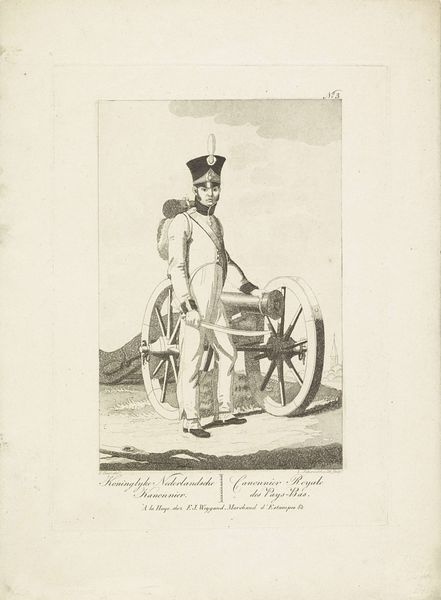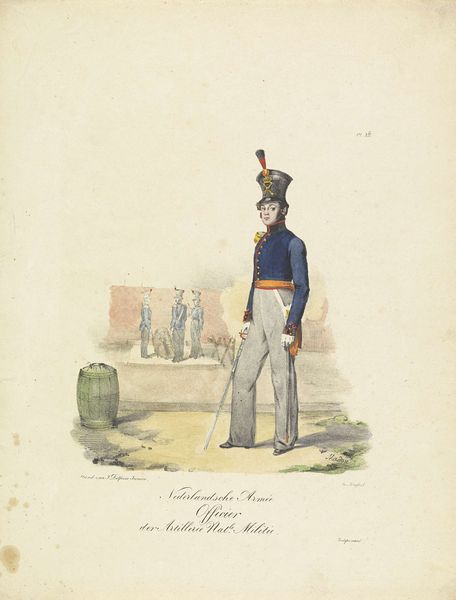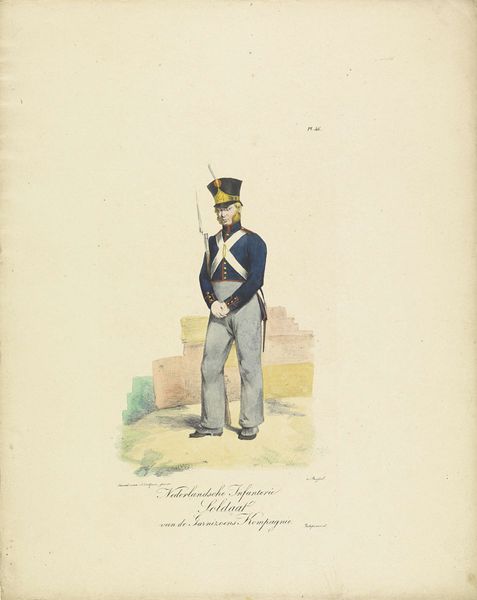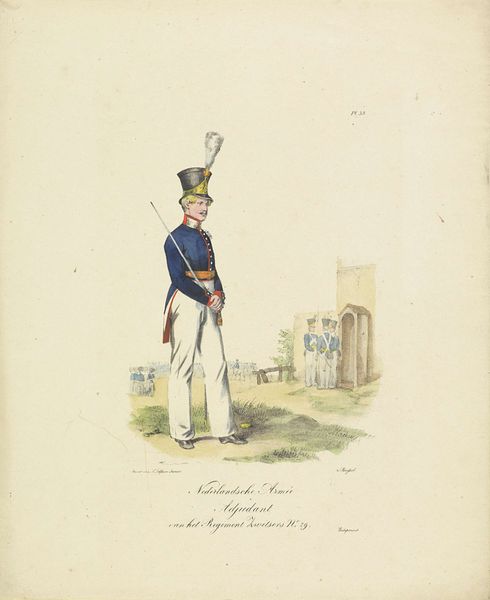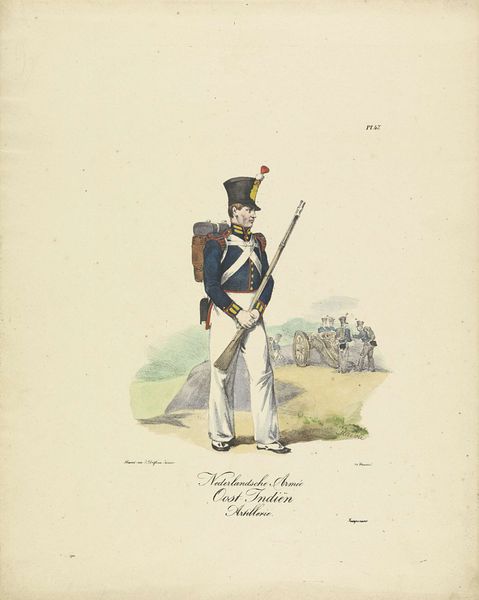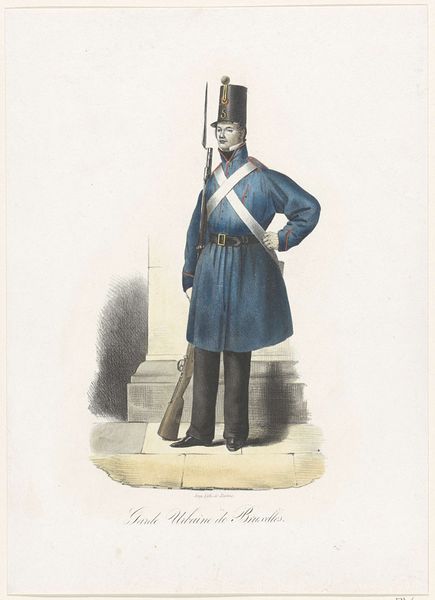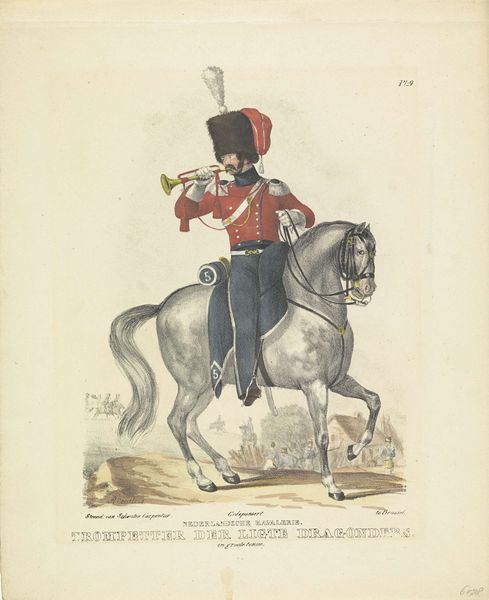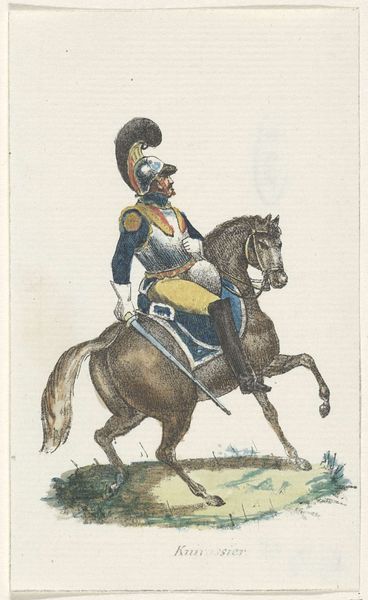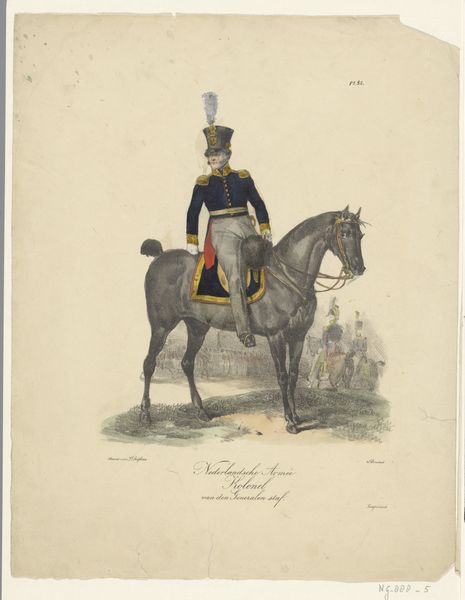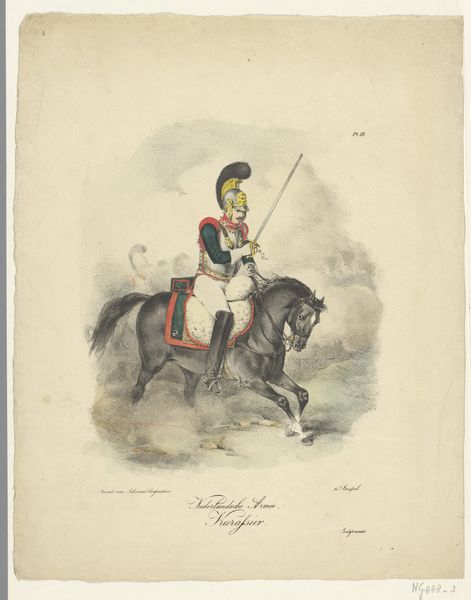
print, watercolor
# print
#
watercolor
#
coloured pencil
#
romanticism
#
watercolour illustration
#
genre-painting
#
watercolor
Dimensions: height 368 mm, width 292 mm
Copyright: Rijks Museum: Open Domain
Curator: The artwork we are looking at is titled “Kanonnier,” made circa 1825-1827 by Jean-Baptiste Madou. It is a watercolor and pencil print currently housed here at the Rijksmuseum. What are your initial thoughts? Editor: There's a melancholic feel to this soldier, a somber quality. The cool blues and grays mixed with those splashes of red seem to evoke a certain emotional restraint. I immediately wonder about the broader social context in which such images were consumed. Curator: Indeed, the Romanticist style often carried an air of contemplation, focusing on individuality amidst greater forces. Genre-painting often idealized or commented on the status of the individuals. He’s a Dutch artilleryman, standing stoically by his cannon. Notice how the crispness of his uniform stands in contrast with the suggestion of dirt at the edges of the print. Editor: That dirt really draws attention to the human aspect amid military presentation. I am especially drawn to the placement of the cannon. It isn’t centered in the composition but sits almost protectively at his side. Curator: Perhaps Madou means to show a figure in repose, rather than in the heat of battle? This work makes me consider how depictions of military figures can embody wider ideas of duty, nationhood, and individual sacrifice. It speaks to an era wrestling with both the ideals of revolution and the realities of its aftermath. Editor: Definitely. I'd be interested to research how these depictions were employed politically. Were these romanticized portraits intended to recruit, to intimidate, or maybe to console a war-weary public? Curator: Exactly. Such images helped to construct narratives of nationhood and military service, subtly shaping public opinion and cultural memory. He serves a role, as much as serves a cannon. Editor: Considering those roles and purposes certainly deepens my appreciation. This opens new questions, beyond the visual harmony, that are deeply engaging. Curator: I agree; it’s a potent blend of aesthetic appeal and cultural commentary. A tiny portrait speaks to vast historical questions.
Comments
No comments
Be the first to comment and join the conversation on the ultimate creative platform.
